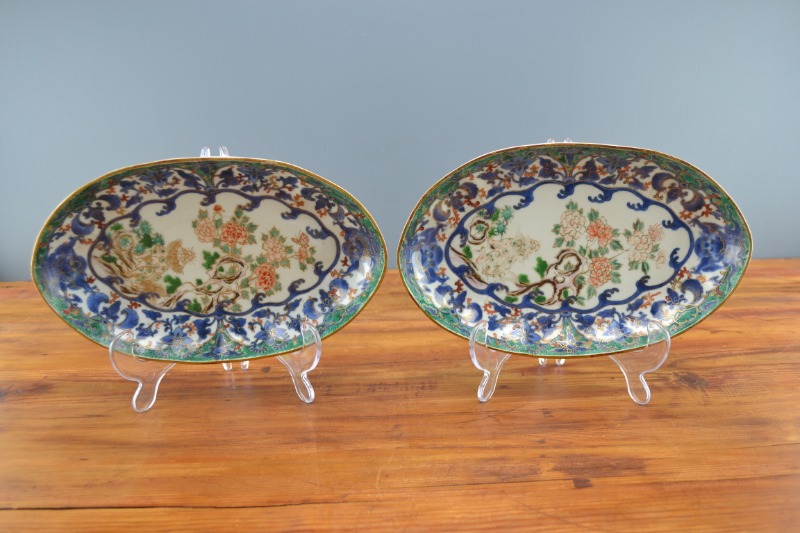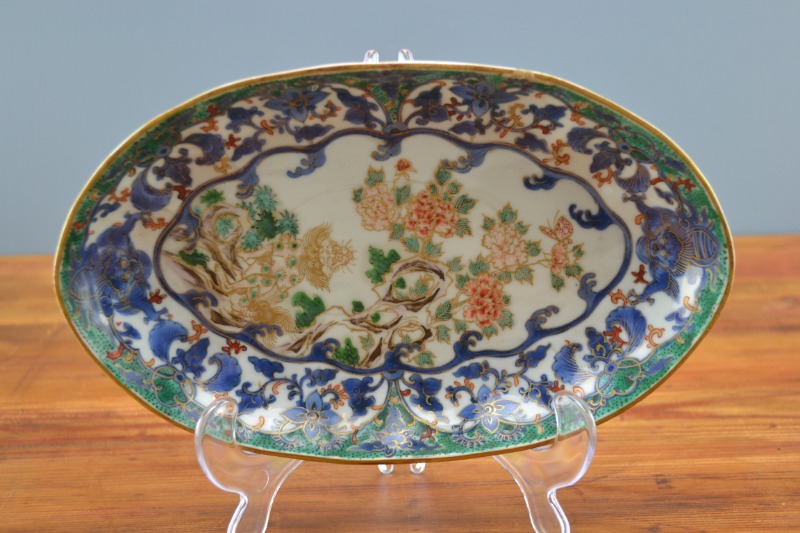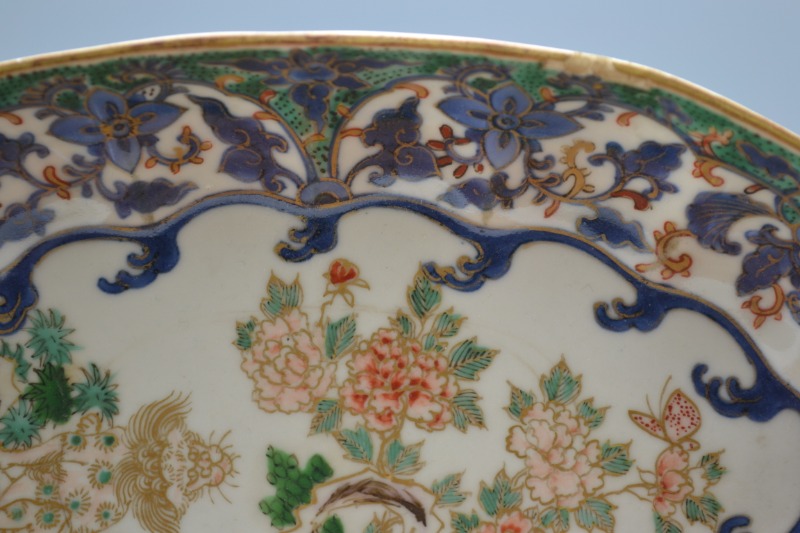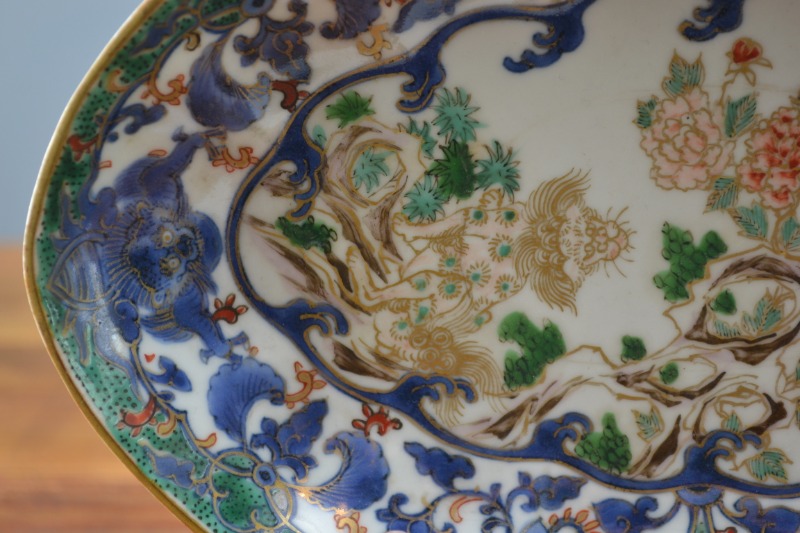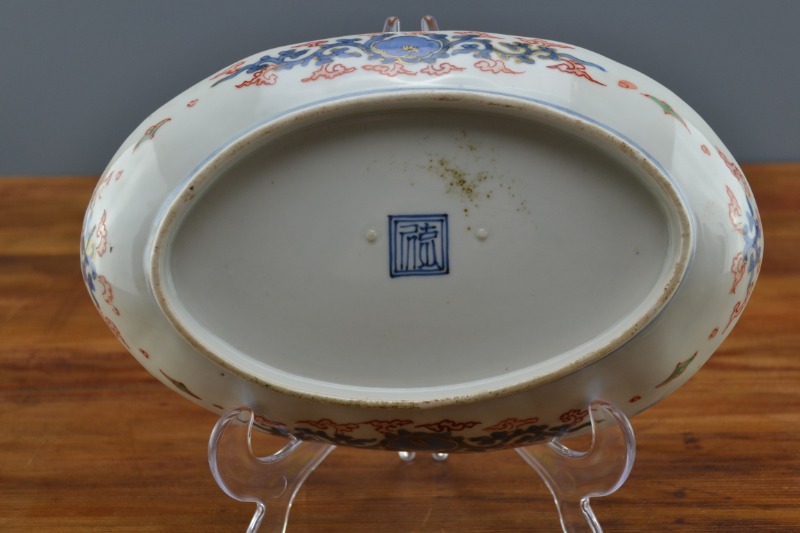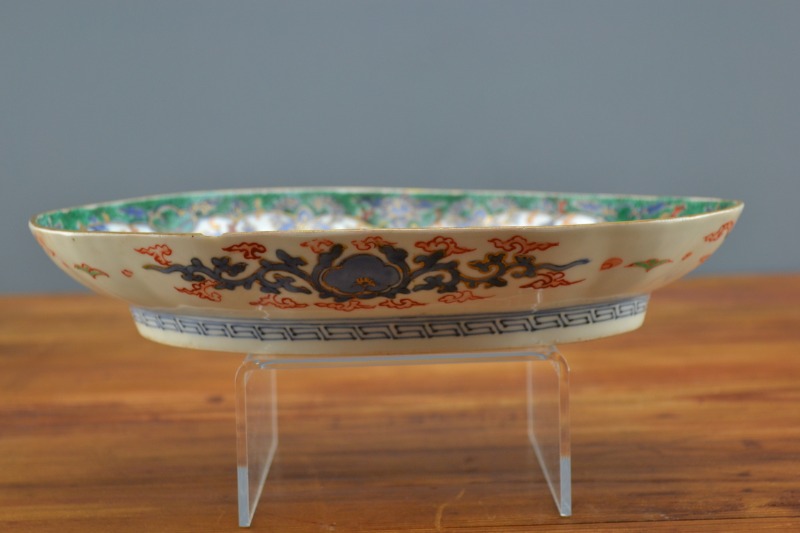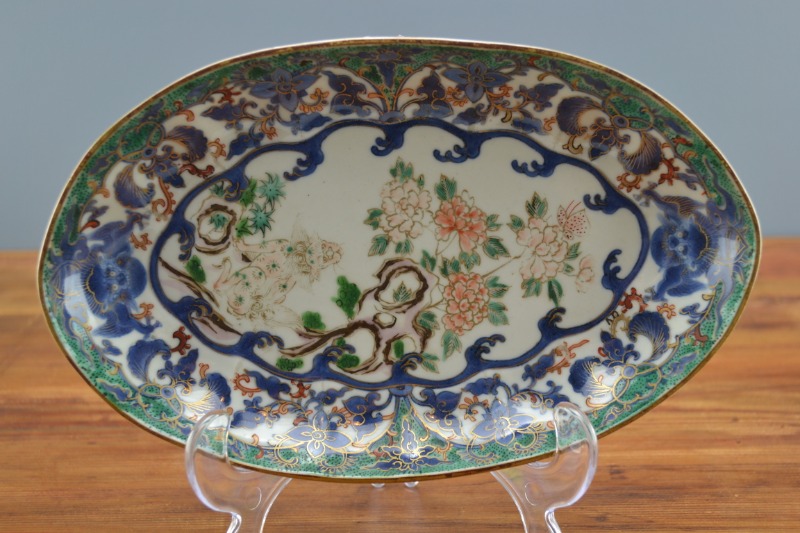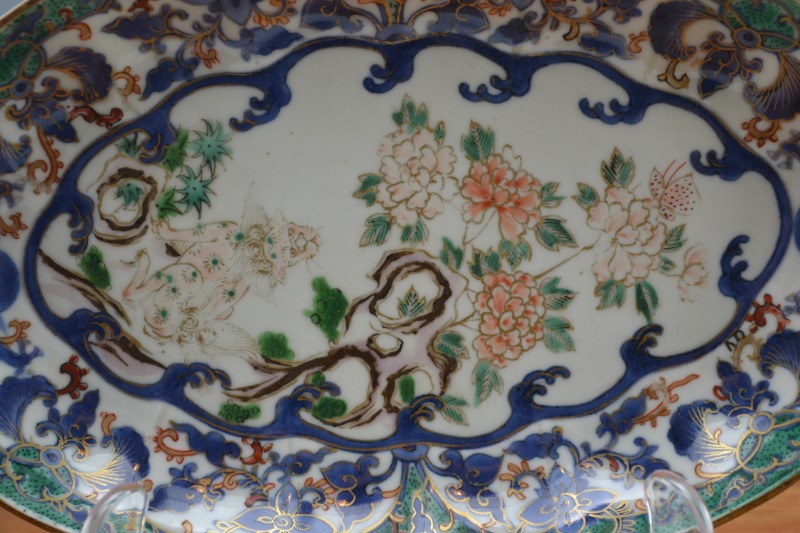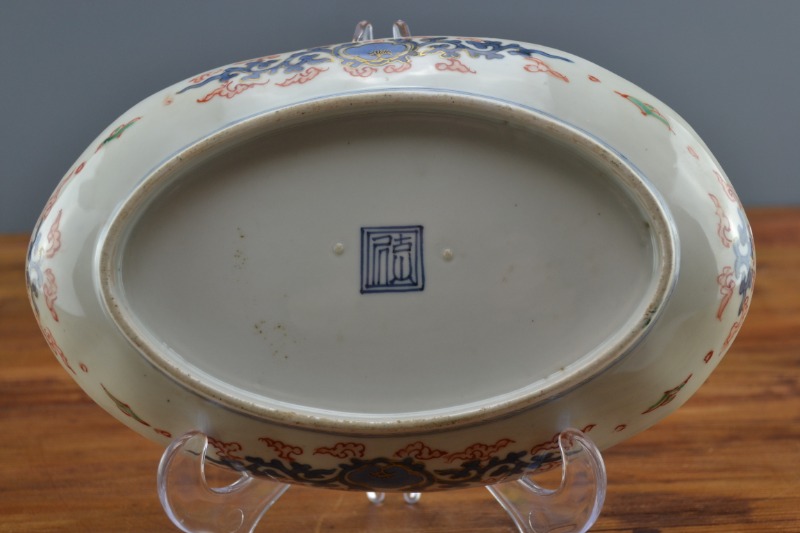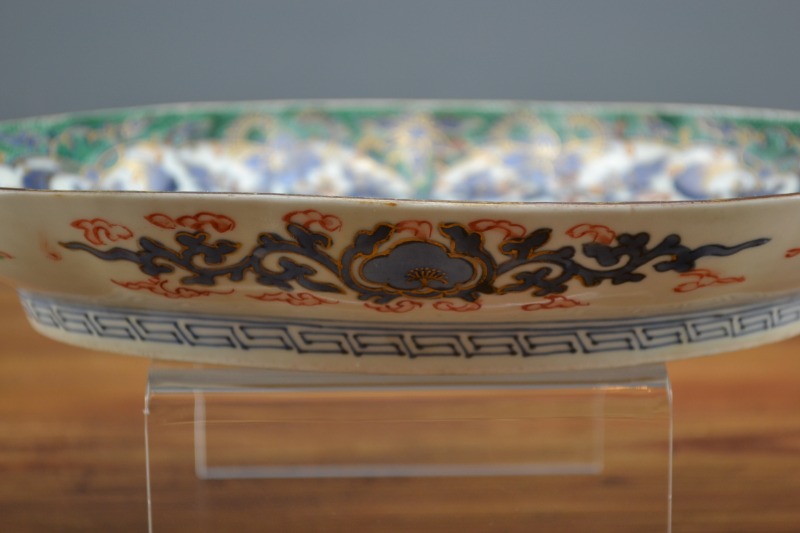Pair of Oval Shaped Scalloped Japanese Imari Dishes, Edo Period, 1820 - 1870
Age:
Edo Period, 1820 - 1870
Material:
Porcelain
Dimensions:
24cm x 14.5cm x 4cm
Shipping:
Standard Parcel
Price:
SOLD
A fine pair of Edo Period Japanese Imari dishes. The shallow oval bowls are gently scalloped. The outer border is composed of a black stipple ground against a medium green enamel with a floral under-glaze blue and white cartouche, highlighted in gilt and surrounding a central field with a peony tree and a shishi, or foo dog, drawn in gold.
The underside is decorated with lotus scrolls in underglaze blue surrounded by cloud scrolls in overglaze red. A key fret in blue runs round the narrow foot. The foot rim is of white clay with iron oxide lines to the edges of the glaze. The white glazed base has a pseudo Chinese mark and two small spur marks where the piece sat on kiln supports in the sagger when fired - a feature generally only found on Japanese ceramics. This is because Japanese clay was more prone to warping than the Chinese, as export markets demanded thinner and more refined wares.
There is a small chip to the edge of one of the plates. The gilt in the centre of the other is slightly rubbed. Otherwise, they are in good condition with no cracks or scratches.
Imari refers to the port through which porcelain from the Arita kilns was traded. It was first exported to Europe when political turmoil temporarily halted Chinese trade in 1656–1684. Its export surged again in the 19th century when japonism flourished in Europe. The leaping shishi in a landscape of rocks and tree peonies was a classic subject in Japanese art known as “Botan-ni-Shishi”, a motif considered to be emblematic of the Samurai qualities of bravery and elegance.

